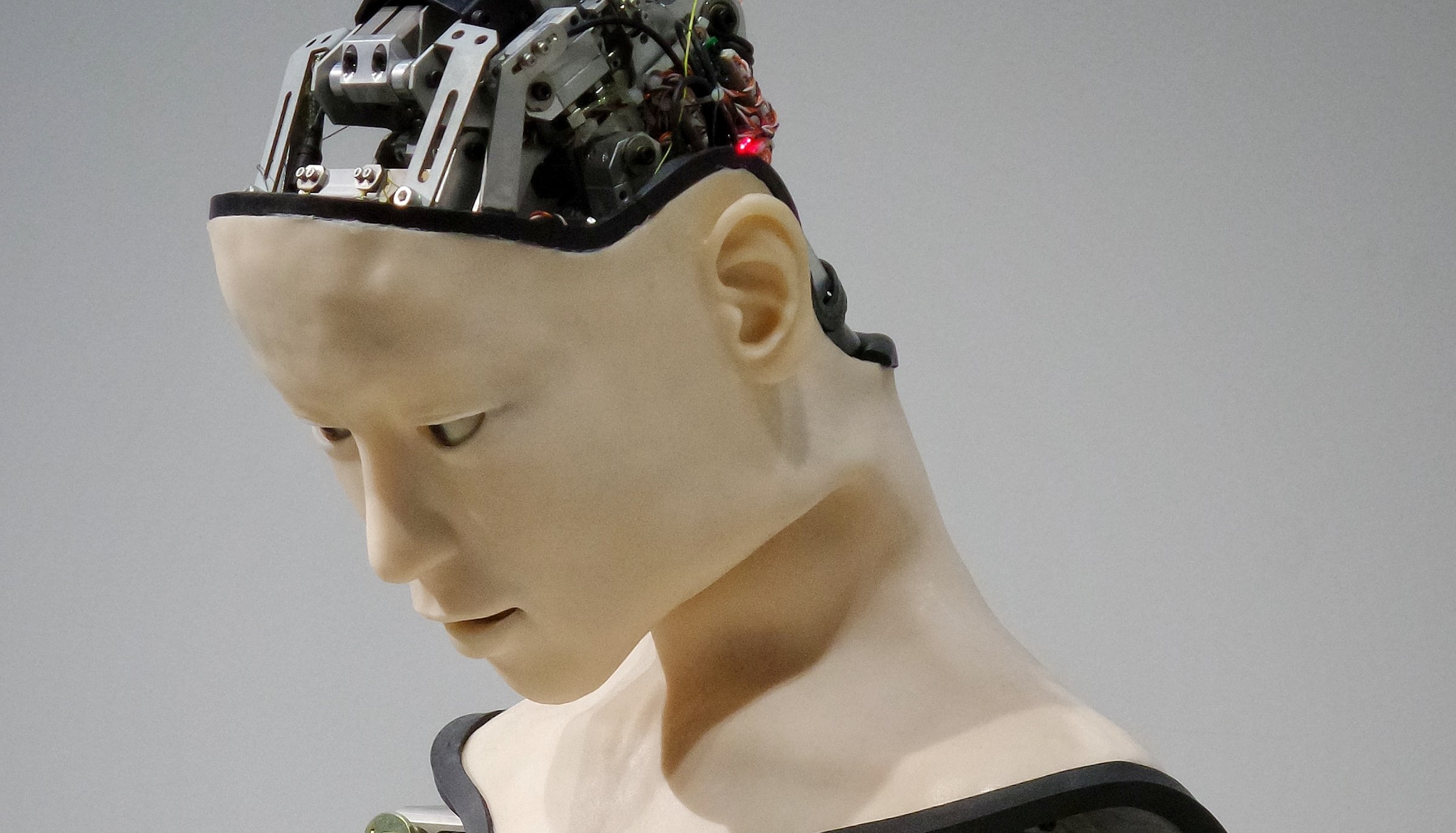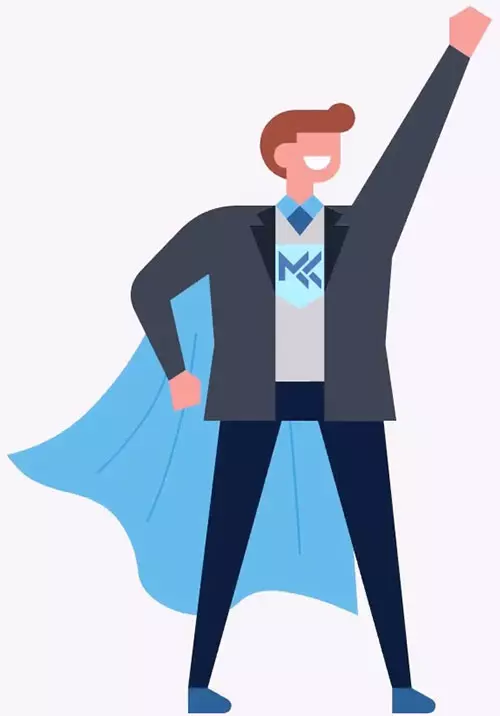Casey, or the BCG Chatbot Case, is the new iteration of BCG’s Online Case aptitude test.
With Casey, BCG replaces a more traditional test with multiple choice questions with a chatbot meant to more closely mimic a real case interview - if that interview were conducted over WhatsApp rather than over a desk.
Given your performance will be a big part of whether you make it to the next round of selection - and ultimately whether you manage to land your job at BCG - the stakes are high!
To make matters worse, candidates have said that this new test is very difficult, with huge time pressure.
Obviously then, you’re going to want to prepare for Casey properly. Don’t panic - we’ve got you covered!
In this article, we’ll start by getting you up to speed with what Casey is and how BCG implement it in their selection process. We’ll also provide some useful background on why BCG wants to use this kind of test in the first place.
Once you understand what you are up against, we’ll cover how you can prepare for Casey and how this fits into your wider preparation.
Importantly, we’ll include some guidance on how your preparation should change depending on how long you have until test day. An optimal prep will be considerably different if you’re reading this a couple of months before you apply, versus just after BCG have sent you your invitation to sit the test. Either way though, there is a lot you can do to improve your chances!
Let’s dive right in…
What is Casey?

In short, Casey is a business case study administered automatically. The idea is that it should simulate a traditional case interview but with a chatbot standing in for the human interviewer.
Generally, you will be asked to sit Casey at home on your own computer rather than come in to a BCG location, as was sometimes required with previous tests.
Casey splits a single focal case study into eight to ten questions to be completed in 30 minutes.
As part of this, your last task is to deliver your final recommendation in a 60-second video, recorded on your webcam. The time limit here is very strict, and candidates have noted being automatically cut off when they ran beyond it.
Casey’s interface looks quite like Slack or even WhatsApp or SMS, with the characteristic text balloons from you and the chatbot displayed over a background image.
As such, Casey is presented much like a real conversation. However, despite the very naturalistic look, for the time being, this appears not to be some advanced AI you are chatting with. Instead, the chatbot will ask a series of standardised questions without giving you any feedback or notable interaction etc in between. Given the obvious, and well publicised, advances in AI chatbots, though, this seems likely to change in future iterations of Casey.
As it is, the current lack of feedback from the Casey chatbot has some important implications for the nature of this test and how you approach it - which we will explain in more detail shortly.
Question formats
Unlike the previous BCG Online Case and similar assessments like the old McKinsey PST, Casey is not only limited to multiple choice questions, but contains a mix of different question formats.
Some questions are indeed multiple choice (sometimes allowing you to pick more than one answer), others require you to fill in a number or write a single sentence in a box and others still require you to record your full rationale and/or mathematical working.
Of course, most distinct of all is the final recommendation to be delivered as a strictly timed 60-second video recorded on your webcam.
Scoring
The previous BCG Online Case used negative scoring for wrong answers. Thus it was better not to guess for a question where you really didn’t have a clue, as wrong answers actively deducted points from your final score.
However, this is no longer a consideration in Casey, as there is no option to skip giving an answer to questions. An answer is required for you to move on to the next question, so you have no choice but to give your best guess, even if you aren’t sure.
One important point to note for time management is that questions are not necessarily singular, but can be subdivided into multiple smaller sub-questions. Thus, you cannot necessarily assume that you will be able to get through the next question in the same time you did the last, as it might be subdivided into more parts. The only thing to do is to work as fast as you can all the time.
Navigation
Related to the above, you cannot navigate between questions in Casey. You simply complete one and are moved to the next. You cannot return to change your answers to previous questions, nor can you preview questions you haven’t seen yet. This is an important difference versus some other tests and interfaces like Typeforms that Casey might otherwise resemble.
Question interdependence
BCG claims that the questions in Casey are all independent, such that if you mess up one, that shouldn’t stop you from getting the subsequent questions right.
However, this is not how test-takers have experienced Casey.
In practice, those invited to sit Casey find that making mistakes in earlier questions will seriously influence whether you are able to get the correct answers for later questions.
It might be that Casey questions are separable at a strict, logical level but that, in practice, your initial approach to the case will often set you up for success or failure throughout. This would seem more likely to be true in practice with a test where heavy time pressure will realistically prevent a candidate from starting again from an entirely new framing of the overarching case study. Instead, test takers will be forced to rely on their same overall interpretation and structuring of the case throughout - such that getting off to a bad start will make it likely they approach subsequent questions wrongly.
Whatever the underlying truth of the matter, the practical takeaway remains the same - even though you’re up against the clock, you need to work as carefully as possible and check your working as far as time allows. In particular, you need to double-check all your maths, as making a mistake at the start can mean inputting the wrong numbers into all your subsequent calculations.
This issue is exacerbated by the fact that, as discussed below, Casey does not provide feedback or prompts in response to wrong answers, so there is nothing to nudge you onto the correct path again if you take a wrong turn.
How is Casey different from a case interview?

Since BCG and other firms are increasingly conducting at least some fraction of their live case interviews via video call rather than in person, one might be excused for wondering if there is really any meaningful difference between Casey and “real” case interviews beyond working in text rather than verbally.
Certainly, the two are pretty similar in terms of their requirements on the candidate. After all, as we’ll discuss below, Casey is fundamentally a cost-effective stand-in for one or more live interviews. Much the same skills are tested, and your preparation for both Casey and standard case interviews will very heavily elide.
However, Casey isn’t a perfect simulation of a traditional case interview and, importantly, those points of difference actually impose some distinct and notable challenges that you need to bear seriously in mind for a successful preparation and test day.
Let’s take a closer look:
- More Time Pressure - Case interviews can already be pretty time-pressured, but candidates often note that Casey is even worse. As opposed to the McKinsey Solve assessment, which is designed to give ample time and not overly hurry candidates, Casey piles on the pressure. There are even captions regularly reminding you how much time you have remaining and candidates are simply cut off if they don’t finish recording their final video recommendation in time.
- No Interviewer Feedback - This might seem trivial if you are new to case studies, but the fact that the Casey chatbot does not supply appropriate prompts/hints if you get stuck or point out minor mistakes before you move on is a major difference. In a traditional case interview, the interviewer can somewhat coach a candidate to get them through a question. This isn’t simply charitable but gives the interviewer a fuller view of how you think at each step of the problem rather than stopping as soon as you make one error. The fact this isn’t present with Casey means that initial calculation errors or mistakes with initial structuring can easily mess up your whole approach to a question. This ideally means checking twice and working in a more methodical, careful manner - though this is easier said than done under such heavy time pressure…
- Calculators Allowed - A glaring difference versus a standard case interview is that calculators and other, similar tools are allowed. Much like the McKinsey Solve assessment, with your Casey test completed at home, BCG make no attempt to stop you having whatever you like on hand at your desk. This might seem like a ray of hope to candidates with less of a quantitative background. However, this actually makes things tougher…
- Heightened Demands on Mathematical Skills - An increased demand on your mathematical ability in Casey versus a traditional case interview emerges as a result of the previous two points. The fact that you have basic arithmetic covered by your calculator means that Casey is free to test your mathematical skill in other dimensions. Thus, there will generally be a significantly increased demand - at least versus the average case interview - on your ability to form equations and generally to think through more complex, multi-step calculations. The real challenge is likely to be how you set up your approach to the question and the specific route you take through calculations rather than simply manipulating the numbers. This might suit those from an “academic maths” background a little more than a standard interview.
- Interpret Text Fast - Whilst a case interview is verbal, Casey requires you to read, digest and understand relatively substantial blocks of text very quickly. In this regard, Casey is more similar to a GMAT or the old McKinsey PST than the rest of BCG’s selection process.
How is Casey implemented in the BCG selection process?
At time of writing, Casey appears to be used differently by different BCG offices. However, it is not clear if this is simply a comparative trial of different methods for one pipeline to subsequently be adopted across the firm, or if this is simply a case of different offices exercising latitude in how they operate their own selection processes. Time will tell.
Currently, though, there appear to be two main ways in which Casey is used:
Casey as gatekeeper
Many offices will employ Casey as part of one or more pre-interview stages of selection that must be passed before being invited to a live interview.
Casey might be employed alone at this stage or might be leveraged alongside an HR phone screen and/or additional online selection tools, potentially including the SparkHire automated fit interviews, the Pymetrics Test or the BCG Potential Test.
Accounts from applicants suggest significant inter-office variation here. However, one relatively consistent feature of this MO is that subsequent live case interviews will tend to be conducted in person, on location. In this case, Casey will have straightforwardly acted to thin down the candidate pool before any interviews are conducted by real humans at all.
There is also some evidence that this use of Casey-as-gatekeeper might be more prevalent where offices are selecting candidates for internships or lower-ranking positions than for more senior roles.
Casey as interview supplement
Possibly more common is using Casey as part of the first round of case interviews. Casey will thus be deployed alongside one or more live case interviews, presumably replacing one or more additional live interviews that might be performed otherwise.
With this MO, the entire first round will typically be conducted online and candidates will often be asked to sit Casey on the same day as they attend one or more live interviews via Zoom.
This usage of Casey is interesting, though, as the fact they still employ Casey beside a live interview at all suggests that BCG finds some utility in their online chatbot beyond it being a pale, cost-cutting imitation of a real interview. We explore some possible synergies between Casey and “real” interviews below.
Does everyone get the same case?
This is very hard to confirm for sure, but the short answer is “yes and no”.
It does seem that BCG will often make use of at least very similar cases for all the applicants in a particular geographic region over a particular period of time.
Thus, everyone in South East Asia might get the same case in a particular hiring cycle, whilst everyone in North America might get another.
However - and this is important - even if everyone applying this year to the same office as you are saying they got, for example, the same case study about an airline with a profitability problem, that doesn’t mean these cases are actually exactly the same.
One of the touted features of Casey is to be able to score candidates on fundamental traits, so that those candidates can still be robustly ranked despite being given different questions.
This would be very similar to McKinsey’s approach with their Solve assessment (also known as the PSG) where, at time of writing, every candidate will get slightly different versions of the same two basic games. For some candidates, the settings of the games will change - the same challenges might be set in an alpine, aquatic or jungle environment, for instance. For other test takers though, simply the raw parameters in the game will change. So an ostensibly very similar scenario might contain different numbers of species to work with, have different stats associated with those species etc.
These arbitrary differences stop any candidate from having an unfair advantage because they heard some details from someone else who took the test before them. However, the differences are simultaneously not sufficiently profound to mean that candidates cannot be usefully ranked - McKinsey is able to look through the minor differences in the exact games and rank candidate performance regardless.
Information is still relatively scant for the time being, and it seems that changes are being made more frequently than the more established Solve assessment. However, the key takeaway is that, whilst you should pay attention to what other test takers are saying, you shouldn’t assume that will get the same case as them - and you should absolutely not plan to simply enter someone else’s answers into your own Casey test!
Why do BCG use this kind of assessment?

Casey is effectively a modernised iteration of BCG’s older Online Case.
BCG is far from the only big consulting firm starting to leverage reasonably advanced modern aptitude tests as part of their selection process. At high level, McKinsey’s Solve assessment and the Pymetrics test leveraged by a number of consulting firms (sometimes including BCG) fulfil much the same function.
In the past, all these firms used more traditional aptitude tests. These would typically be multiple choice, broadly GMAT-style tests, conducted on pen and paper in exam rooms supervised by company staff. Latterly, candidates would be asked to sit similar tests on company computers rather than on paper.
However, as these tests became digital, it became possible to have candidates sit them at home rather than on location, and this at-home testing has since become the norm.
Notably, other major firms - in particular McKinsey and Bain - have gone in a somewhat different direction to BCG in terms of the specific tests they have adopted. Elsewhere, the move has largely been towards tests that assess the same fundamental cognitive traits as a case interview, but outside of a business context and requiring little or no mathematics. However, BCG has been moving to a more and more direct simulation of a case interview, with obviously high demands on business knowledge and mathematical competence.
What do modern aptitude tests offer?
Importantly though, all these tests fill the same basic role. Let’s take a quick look at a few things modern aptitude tests offer consulting firms:
Cost-Cutting
Bluntly put, for all these firms, the primary reason for employing these tests is as a straightforward cost saver.
Whilst the theory and computational methods underpinning aptitude tests are improving at a formidable pace, it seems fairly certain that the real-life case interview will continue to be the gold standard means of selecting new consultants until such time as an AI can replace human consultants entirely.
The problem for BCG and similar firms is that real case interviews are expensive in terms of both staff time and disruption to projects.
Conducting in-person case interviews involves pulling consultants off active engagements, potentially requiring them to fly back to their home office if they are working on-site. Make this issue exponentially worse for second-round interviews requiring a partner to lead them.
The result is that consulting firms want to minimise the number of case interviews conducted per new hire as far as possible.
This problem is of course all the more pressing in light of the sheer volume of applications per position top-end firms like BCG receive. For sure, the majority will always be cut at the resume screen, but there will still be far more high-quality candidates than can ever be given multiple case interviews.
Many BCG offices appear to use Casey in precisely the same manner as other firms use Solve, Sova or Pymetrics. That is, to significantly reduce the candidate pool before proceeding those who remain on to the case interview round of selection. Clearly, this hugely reduces the number of interviews needed to finally winnow down the pool. Even for those BCG offices using Casey in parallel with real case interviews, at the same stage in the selection process, having candidates sit Casey will be replacing one or more traditional interviews and thus keeping costs down.
Outreach
The demands of the Covid pandemic accelerated a general trend towards at-home testing and interviews, making more of the selection process for major corporates remote. However, even before the pandemic, there were other reasons to move recruitment online.
One of these reasons for at-home testing was the ability to cast a wider net in finding new talent - allowing those candidates living outside major cities with BCG offices and/or target universities to get a foot in the door in the selection process without having to find the time and money for trains, planes and automobiles to make it to BCG’s physical location.
Importantly, this isn’t just an ethical matter but makes good raw business sense. Expanding the pool of candidates competing for roles should, all things being equal, increase the quality of those being selected at the end of the process. BCG and similar firms’ business models ultimately rely on recruiting the very best talent available - and they simply can’t rely on this being located a stone’s throw from their own office.
Environmental
Another advantage of moving to a more remote selection process is a reduction in carbon emissions - and especially air miles - associated with the recruitment process. Thus, tests like Casey not only allow BCG and similar firms to save money on interviews but also derive some PR gain around their ESG credentials.
Casey might be better for BCG than just another case interview
An interesting consideration is that the differences between Casey and a real interview aren’t just shortcomings of Casey as a lower-cost simulation of an in-person interview, but might also be leveraged as positive advantages by BCG when employed in synergy with traditional case interviews.
In simpler terms, it might well be that some aspects of Casey allow BCG to gather useful information they wouldn’t have been able to access via case interviews alone.
An easy example from above is that Casey allows BCG to get an assessment of the candidate’s mathematical skills in a different dimension to a case interview. The traditional interview will largely test mental arithmetic and particularly the ability to make estimations and conduct quick calculations.
Casey then allows BCG to assess the same candidate’s mathematical reasoning at a higher level, separated from the need to conduct raw calculations.
However, there are potentially more significant synergies with in-person interviews.
BCG notes that Casey offers more of an objective, absolute assessment, and thus ranking, of candidates. This can have some real advantages in, for instance, taking account of the differences between individual interviewers.
In effect, the absolute scores generated by Casey could let BCG “calibrate” the assessments offered by different human interviewers - ironing out the differences between those who are more or less demanding - or potentially even helping account for systematic biases.
Since Casey is employed globally, there might also be some utility for BCG in making a similar examination of differences in recruitment between different offices. Thus, BCG would be able to notice if the calibre of candidates, as scored by Casey, was notably lower at certain locations - possibly allowing for ameliorative action from headquarters if large differentials started to develop.
We can expect that a firm like BCG, which needs to be at the cutting edge and sells itself to clients based on having exceptionally high-quality staff, will care a great deal about maintaining high standards across a global operation. Indeed, this is an issue other large firms explicitly contend with - as we see with Amazon dispatching its “Bar Raisers” even to the most far-flung locations to make sure that only the best new employees are hired. Casey might help BCG accomplish some measure of the same quality control.
How can I prep for Casey?

Your best options to prep for Casey depend on how long you have until test day. Here, we’ll start by outlining what an optimal prep would look like, with unlimited time on your hands. We’ll then see how things change if you are on a tight time frame - for example, if you only found out Casey existed when you were asked to take the test in the near future.
Finally, at the most immediate end, we’ll take a look at some fundamental tips for test day itself.
Optimal, Long-Term Prep
At a fundamental level, case cracking is case cracking, regardless of the specific format. Success when facing a chatbot or a video or in-person interview will ultimately depend on your being able to understand the case they give you and efficiently work through to a correct solution.
If you want to land a job at BCG, you will very likely have to get through five or possibly more live case interviews, conducted either via video call or in person. If you are asked to complete Casey, you can think of this as simply an idiosyncratic wrapper around what is basically just another case session.
Ideally then, your prep for Casey will simply be a more specific subset of your wider preparation for case interviews at BCG and any other firms to which you are applying.
We have excellent articles on all aspects of case cracking and related skills. A great place to start is our introduction to the case interview, where you can read about our recommended, MBB-style case cracking method in some detail in the collection of articles here, including particularly Casey-relevant skills like consulting maths.
We also have a great free case library for you to test your skills against and a free meeting board, where you can find fellow applicants from around the world to practice with.
These articles and free resources will give you an excellent foundation. However, to step things up to a higher level, the best place to go for a fully rounded, high-quality guide to case solving is our Case Academy course.
You can get full Case Academy access on its own with the MCC Bundle. However, you can lock in more value by getting course access along with some coaching sessions with real BCG consultants.
Having a real consultant put you through your paces will help immeasurably with both Casey and your live case interviews. Not only will this be great practice for tackling BCG cases, but receiving detailed feedback from experienced professionals is the single best way to identify your problem areas and iterate to make genuine progress and truly hone your case-cracking competence.
A great option for the basis of a decent prep would be our Bridge to Consulting, which is a bundle of five one-hour coaching sessions and full course access. You can find this package here:
Now, if you are going to make time for a genuinely thorough prep and want to leave nothing to change, the best option of all is one of our comprehensive mentoring programmes, where a 5+ year experienced consultant takes charge of your whole journey into consulting - advising on networking, helping draft your applications and planning your whole approach to case interviews and the consulting selection process as a whole.
You can read more about our mentoring programmes and apply to join here:
Specific Casey Prep
Whilst the bulk of your case prep will always be focussed on general skill building and simulating live case interviews with peers and/or coaches, it’s still a good idea to do some Casey-specific activities.
You can do these alongside your general case prep from the start, but it will make sense to throw in more Casey-specific work as you get towards the end of your prep, nearer to test day.
Some ideas to help build specific skills and practice for Casey are as follows:
Solo Cases Using a Calculator
You can do a reasonable simulation of Casey simply by working through cases solo, keeping within a strict time limit and using a calculator for the calculations. Our case bank is a great place to start, with a further compendium of free cases linked in this article. Ideally, select interviewer-led, “McKinsey-style” cases, as these will have a more similar structure to Casey. Cases with a strong mathematical component will also be particularly useful.
Practice Video Recommendations
Practice 60 second final recommendation videos. In particular, when working through cases solo, you can practice delivering your final recommendation into your webcam. If you find you struggle with any aspect of this, you might want to specifically practice delivering recommendations to camera in a more focused manner, iterating and improving until you are confident.
Zero Feedback Cases
Even when working with case partners and/or a coach, you can ask that they simulate the feel of Casey by not giving you feedback as you work, but prompting you to work faster and holding you against strict time limits.
PST and Similar Questions
A closer simulation, though, would be to work through some PST-style multiple-choice business questions. The Problem Solving Test, or PST, was McKinsey’s old aptitude test before they moved to the Solve assessment. We have many of these format of questions included in our Case Academy course and, with a free account on our site, you can work through some for free here. These questions embedded in the course are particularly relevant as simulations, as they are presented digitally and have a clock running with a tight time limit imposed.
If you simply want to secure some questions on their own, we have a free downloadable PST practice paper and some more PDFs to purchase in our main PST article.
Mathematics
Almost all the points above will build in a fair bit of mathematics - which you can perform with a calculator to yield more Casey-relevant practice. However, given both the heightened salience of maths within Casey, as well as the slightly different character of that maths, it will likely pay to put in some more focused maths practice.
It might sound trivial, but if it’s been a few years since you’ve used a calculator (a lot of folk won’t have touched one since university, or possibly even since leaving secondary school), then practising working through even trivially easy calculations quickly will help restore some muscle memory and help you avoid “fat finger” errors on the day.
As noted above, our consulting math article is a great jumping-off point.
Help, I’m in a hurry!

So, you’ve applied to BCG and you’ve just found out you’re going to have to sit Casey very soon. You didn’t know the chatbot interview existed until you got the email from BCG and now you’re scrabbling to prepare.
Perhaps, to make matters even worse, you have a busy work and/or academic schedule between now and test day, cutting down your time to prepare even further.
What to do next depends primarily on how much general case prep you have already done:
I have done minimal/no case prep
If you also haven’t started your general case interview prep yet and are green when it comes to case cracking in general, we won’t lie to you - this isn’t an optimal position to be in. This is doubly true if you have a live case interview on the same day or very shortly after.
However, hope is certainly not lost!
In this situation, you will want to think in terms of the Pareto Principle. You need to ramp up your basic knowledge and skillset as much as possible in the time you have available. This is not the time to focus a lot on a little, but to get an understanding of the fundamentals of one topic and move on to the next.
The best single resource here to bring you up to speed on case cracking quickly, as well as give you a truckload of PST-style questions and maths practice material, is our Case Academy course.
You can purchase the MCC Bundle to get access to our course material by itself. However, it will be more economical to get that same material along with some coaching sessions, which will let you work through mock case interviews with real BCG consultants, who will be able to give you pointers on what your weak points are and how to bring these up ASAP. A great option here is a discounted package of our course plus three coaching sessions:
Discounted - Course Plus Three Coaching Sessions
Importantly, this course material and any coaching sessions you get won’t just be useful for Casey but will continue to be useful as you go through the rest of the interview process at BCG and any other firms to which you are applying. You aren’t going to get a consulting job anywhere without convincing case skills and likely multiple rounds of challenging case interviews. You need to get good at case cracking, and top-tier learning material plus coaching is the way to do this .
I’ve done general case prep, but nothing Casey specific
This is a much better position in which to be. If you are already a decent case cracker, then there is a fairly strong chance you’ll be able to pass Casey without any further work - it’s the same fundamental skillset after all.
However, by the same token, there are plenty of accounts of decent casers fluffing Casey because they weren’t used to the format and simply made a mess of things as a result.
As such, it’s a good idea to do at least a bit of case prep - and if you’ve been diligent enough with your prep to learn case solving already, then why stop now?
Really you should try to get through as much of the Casey-specific activity suggested in the optimal prep section as you have time for.
The most useful elements will likely be working through the PST questions, doing some solo cases with a calculator where you practice video recommendations and doing some calculator practice if you need it. These will help transfer the skills you have over to the Casey format - hopefully helping you feel more relaxed and ready to demonstrate your existing competence on test day.
Test Day Fundamentals

Beyond your preparation to get you ready to deal with the questions themselves, there are a few basic tips to take on board before sitting down to do your Casey assessment.
A lot of this is going to be the same as the standard advice for getting ready for more normal Zoom interviews. Indeed, this is already salient as, depending on your target office, you might very well have a video case interview on the same day as your Casey.
- Make sure you have a decent wifi connection. If anything tends to mess this up (using the microwave or vacuum cleaner, for example), make sure any housemates/family know not to do that during your test.
- Check with your webcam in advance that your lighting is on point for the final recommendation video. This might well mean moving around some curtains and/or lamps.
- Similarly, ensure your background is professional or at least contains nothing incredibly sloppy (it seems unlikely that Casey will blur your background for you as you might be used to on Zoom).
- Dress as you would for an in-person interview. If you have a Zoom interview the same day, just dress the same for both. However, if you only have Casey, you should still look fully professional for your 60 seconds of fame at the end.
Now, let’s be more specific…
- First up, don’t do Casey on your phone. This is apparently possible, but will just make life difficult for no particular benefit to you and runs the risk of making your video recommendation at the end look sloppy.
- Use a proper computer and do so at a desk where you have some space for the other items you’ll need. Do not try to sit Casey from a sofa and end up juggling your laptop, calculator, paper etc between your lap and a coffee table (seems obvious, but someone will try it…).
- Finally, make sure you have everything you might need at your desk before you start. Just as basics, you’ll want a pad of paper, a pen and a calculator (you could use a calculator app on your phone here, but you’ll probably be faster with a real calculator). Remember that you can’t pause Casey, so if you kick things off and then remember you left your calculator downstairs, that dash through the house is time you won’t be getting back. Similarly, make sure that your computer is plugged in so you don’t have to do a panicked hunt for a charger halfway through when your battery starts to die.
Now over to you - Good Luck!

